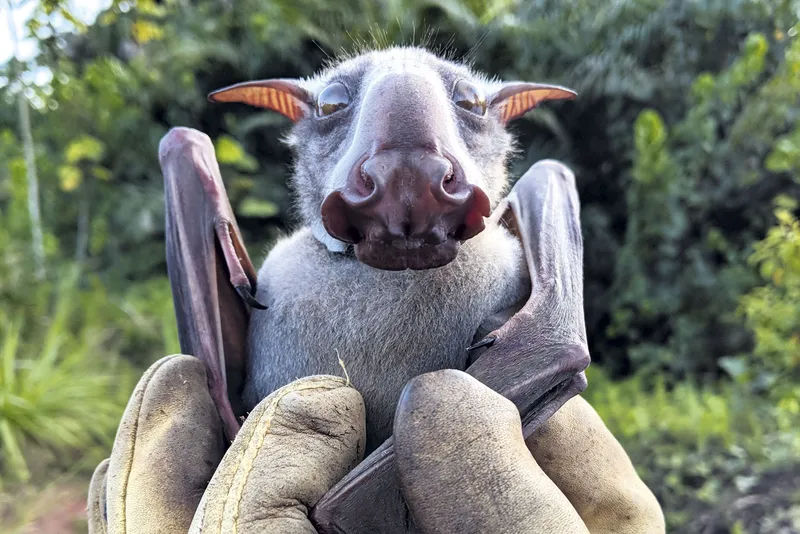With a face that would not look out of place amidst the Notre Dame gargoyles, the hammerhead bat is what the French would call ‘jolie laide’. The phrase, which literally translates as ‘pretty ugly’ refers to a beauty that defies conventional standards.
With the ears of Yoda, the face of the racehorse Desert Orchid, and nostrils that resemble some kind of sea creature, the hammerhead bat’s face is one messed-up mash-up. Until you realise that this oddly–proportioned animal is an evolutionary triumph, that is.
It lives in the lowland rainforests of West and Central Africa, where it feasts on fruit and flies at night.
It’s unusual because it is the only bat species known to operate a lek mating system, a kind of competition where males show off to impress the females, a bit like The X Factor.
Twice a year, during the dry seasons, up to 150 males come together and hang from riverside trees. Then they flap their foot-long wings and honk.
It’s a strange low-frequency noise, which begins gradually and then speeds up to a rapid, staccato buzz, with up to 120 ‘beats’ per minute.
Lovelorn males ‘sing’ for hours at a time, as the females fly by and judge the competition. The males with the sexiest songs are the one that gets to mate. Again, a bit like The X Factor.
The females are choosy, with six per cent of males involved in 79 per cent of matings. It's important then, for a male to belt out a top tune, and so they have evolved several highly specialised adaptations.
The larynx, which is used to produce the honks, is nearly three times larger in males than in females and takes up around half of the male’s body cavity. Large resonating chambers set inside a long, boxy head help to amplify the honks, whilst flayed nostril-like structures and fluted lips help to project the song further.

Females don’t have to sing for sex, and so have no need for this complicated headgear. As a result, they have evolved to look very different, with smaller bodies and compact, fox-like faces.
Indeed, hammerhead bats are thought to be the most sexually dimorphic bat species in the world.
As with all true lek species, females take sole responsibility for caring for the young. After a six-month pregnancy, they give birth to a single offspring, or sometimes twins.
Females become sexually mature at six months, while males take a further 12 months. Individuals display a mixture of solitary and social behaviour, but best of all, when they sleep, they wrap their wings around their noses.
The hammerhead bat is, happily, listed as of ‘least concern’ by the International Union for the Conservation of Nature, which means it is unlikely to become endangered or extinct in the near future.
Life’s not all rosy though. They're sometimes killed by farmers when they steal their crops, and in Nigeria and the Democratic Republic of Congo, the bats are consumed as bushmeat.
To submit your questions, email us at questions@sciencefocus.com, or message our Facebook, X, or Instagram pages (don't forget to include your name and location).
Check out our ultimate fun facts page for more mind-blowing science.
Read more: